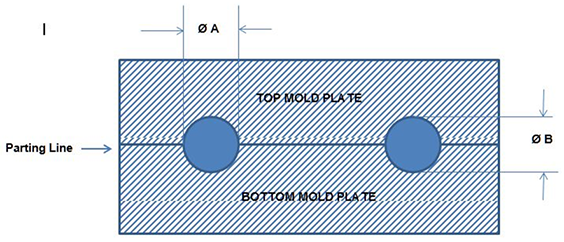Custom Molded Product Tolerances |
|||||||||||||||||||||||||||||||||||||||||||||||||||||||||||||||||||||||||||||||||||||||||||||
|
Because each custom molded product is unique, it is of the utmost importance that dimensional tolerances for each feature be established before tooling is produced. Care should be taken by product designers to avoid using “title block” tolerances, as rubber parts, because of the inherent nature of the material, can seldom be produced to meet these tolerances. To address these issues, The Rubber Manufacturers Association first published “The RMA Rubber Handbook” in 1958. The current revision (2005) can be obtained at www.rma.org. While addressing various rubber manufacturing topics, of particular interest here are the Standard Dimensional Tolerance Tables for Molded Rubber Products. All Seals’s standard tolerances for custom molded parts conform to Table 3, A2 of the RMA Handbook. “A2” tolerances denote a high quality, precision product. Molds must be produced with a high degree of accuracy, and careful inspection of the finished product is usually required. RTD verifies each dimension of your custom molded part using a 3-D, non-contact, computerized vision system. The table below designates All Seals’s standard tolerances for custom molded products. There are two tolerances specified for each feature, “Fixed” and “Closure”. Closure tolerances apply to those features which are affected by the opening and closing of the mold plates, due to variation in flash thickness. Fixed tolerances are not so affected. A simple illustration of these two types of features can be seen in the simple O-Ring illustration shown below. For feature “A” (the radial cross-section), fixed tolerances would apply; for feature “B” (the axial cross-section), closure tolerances apply.
For more critical applications, All Seals can provide custom molded parts according to Table 2, A1 of the RMA Handbook. A1 is the tightest industry tolerance classification and designates a high precision product. Such products require expensive molds, fewer cavities per mold, diligent in-process controls, and specialized inspection procedures. For detailed information regarding A1 tolerances, please contact our Customer Service Department. |
||||||||||||||||||||||||||||||||||||||||||||||||||||||||||||||||||||||||||||||||||||||||||||


